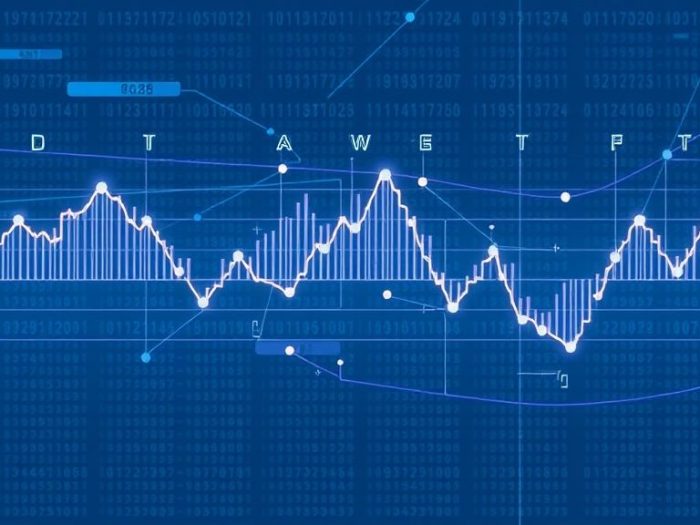Financial markets are dynamic and constantly shifting between different regimes or states.
Market regime detection algorithms are designed to identify these changes, allowing trading
strategies to adapt. This article explores how these algorithms work and their importance in
algorithmic trading.
Understanding Market Regimes
Market regimes are distinct periods characterized by specific market behavior:
- Trending: Sustained upward (uptrend) or downward (downtrend) price movement.
- Sideways/Range-Bound: Price fluctuates within a defined range.
- Volatile: Rapid and significant price swings.
Why Market Regime Detection is Important
Different trading strategies perform better in different market regimes. For example:
- Trend-Following Strategies: Work well in trending markets but poorly in sideways markets.
- Mean Reversion Strategies: Work well in sideways markets but poorly in trending markets.
Market regime detection algorithms help adapt trading strategies to optimize performance and manage risk.
Methods for Market Regime Detection
Several techniques can be used to identify market regimes:
1. Volatility Measurement
Analyzing the degree of price fluctuations.
- Indicators: Average True Range (ATR), Standard Deviation.
- High Volatility: Regime change to volatile.
- Low Volatility: Regime change to sideways.
2. Trend Analysis
Identifying the direction and strength of price movement.
- Moving Averages: To smooth out price data and identify trends.
- Trend Lines: Lines connecting a series of higher lows (uptrend) or lower highs (downtrend).
3. Statistical Analysis
Using statistical methods to analyze price patterns.
- Autocorrelation: Measuring the correlation of a time series with its past values.
- Cluster Analysis: Grouping similar market conditions together.
4. Machine Learning
Training machine learning models to recognize market regimes based on various features.
- Hidden Markov Models (HMMs): Statistical models that can represent a system with unobserved states.
- Neural Networks: Powerful models capable of learning complex patterns.
Building a Market Regime Detection Algorithm
Here’s a simplified example of how to combine volatility and trend analysis:
1. Calculate Volatility
Use the Average True Range (ATR) to measure volatility.
2. Identify Trend
Use a moving average (e.g., 200-period) to determine the overall trend.
3. Define Regimes
- Uptrending: Price above 200 MA.
- Downtrending: Price below 200 MA.
- Sideways: Price oscillating around 200 MA.
- High Volatility: ATR above a certain threshold.
- Low Volatility: ATR below a certain threshold.
4. Combine Regimes
Combine trend and volatility information to define more specific regimes:
- Uptrending & High Volatility
- Sideways & Low Volatility
- Downtrending & High Volatility
5. Switch Strategies
The algorithm switches between different trading strategies based on the identified market regime.
Challenges
- Parameter Optimization: Choosing the right parameters for indicators and models.
- Overfitting: Designing an algorithm that works well on historical data but fails in live trading.
- Regime Transitions: Market transitions can be abrupt and difficult to predict.
- Computational Cost: Some methods, especially machine learning, can be computationally expensive.
Conclusion
Market regime detection algorithms are valuable tools for algorithmic traders, enabling them to
adapt their strategies to changing market conditions. However, careful design, testing, and
robustness checks are crucial for successful implementation.
Related Keywords
Market regime detection, algorithmic trading, trading algorithms, market conditions, trading
strategy, volatility, trend analysis, quantitative trading, machine learning trading,
automated trading.
Frequently Asked Questions (FAQ)
1. What are market regimes?
Market regimes are distinct periods characterized by specific market behavior, such as
trending, sideways, or volatile conditions.
2. Why is market regime detection important for trading algorithms?
Different trading strategies perform better in different market regimes. Detecting
regime changes allows algorithms to adapt and optimize performance.
3. What are some common market regimes?
Common regimes include trending (uptrend or downtrend), sideways/range-bound, and
volatile.
4. How can volatility be used to detect market regimes?
Indicators like the Average True Range (ATR) or standard deviation can measure
volatility. High volatility can signal a volatile regime, while low volatility can
indicate a sideways regime.
5. How is trend analysis used to detect market regimes?
Moving averages and trend lines help identify the direction and strength of price
movements, distinguishing between uptrends, downtrends, and sideways trends.
6. What is autocorrelation?
Autocorrelation is a statistical measure of how a time series (like price data) is
correlated with its past values.
7. What are Hidden Markov Models (HMMs)?
Hidden Markov Models (HMMs) are statistical models that can represent a system
with unobserved states, which can be used to model different market regimes.
8. What are some of the challenges of building market regime detection algorithms?
Challenges include parameter optimization, avoiding overfitting, and the difficulty
of predicting abrupt regime transitions.
9. How many market regimes should a trading algorithm typically consider?
Algorithms often consider at least three regimes: uptrending, downtrending, and
sideways. More complex algorithms may identify even more nuanced regimes.
10. Is market regime detection a perfect solution for trading?
No, market regime detection is a valuable tool, but market transitions can still
be unpredictable, and no algorithm can guarantee profits.



